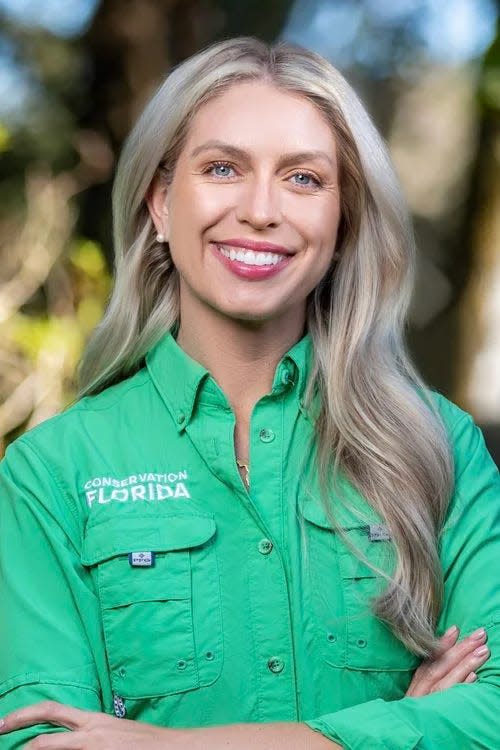Florida state budget a colossal win for conservation
On June 15, Florida Gov. Ron DeSantis signed the state’s 2023-24 $116.5 billion Framework for Freedom Budget into law. This year’s approval of almost $1 billion for land conservation is more than a remarkable achievement — it’s monumental.
This funding brings the total amount dedicated by the Florida Legislature, and approved by Gov. DeSantis, for land conservation programs and initiatives to an astounding $2 billion over the last three years.

At the height of conservation funding in our state’s history, land conservation programs were receiving $300 million annually. Two billion dollars in three years? Absolutely historic. Just years ago, many state leaders were debating whether to fund conservation programs at all.
The programs benefiting since 2021 include the Florida Department of Environmental Protection’s Florida Forever and Florida Communities Trust programs and the Florida Department of Agriculture’s Rural and Family Lands program. The Florida Forever program typically provides funds for the protection of natural areas, while the Rural and Family Lands program focuses on conserving agricultural lands and working forests. The Florida Communities Trust program compliments both by prioritizing conservation of urban and suburban areas.
Perhaps, most exciting of all, is the impact that this historic funding will have on the Florida Wildlife Corridor’s geography. This vital stretch of land spans the state, from the Everglades to Pensacola, and makes up 18 million acres of wild, public, private and working lands. Currently, just over 10 million acres, over 50%, of the vast corridor is permanently protected from development. This landmark funding will further the protection of the remaining acreage needed to conserve a functional and permanent corridor.
In this year’s budget, two key corridor sections will receive $850 million for land acquisition. The Caloosahatchee-Big Cypress Corridor is located in Southwest Florida and its protection secures critical Everglades and panther habitat. Second, is the Ocala-to-Osceola (O2O) Wildlife Corridor in North and North Central Florida, an area vital to black bears and other endangered plants and animals. Together, the areas enhance the statewide connectivity of a functional corridor.
By protecting and connecting key habitat areas and conserving a statewide wildlife corridor, we ensure the survival of many species that call Florida home, safeguard our freshwater, and keep natural and agricultural lands positively contributing to our state’s economy. The historic level of funding for land conservation programs is a major win to these efforts, allowing us to make greater progress moving forward.
The enormity of this funding cannot be overstated. Preserving our state’s natural resources is essential to maintaining our quality of life and supporting tourism, agriculture and other industries that depend on a healthy natural environment. By investing in land conservation today, we are protecting the future of our state for generations to come.
This would not have happened without the leadership of Florida’s Legislature. I commend House Speaker Paul Renner and Senate President Kathleen Passidomo for their tireless commitment to bring leaders and advocates alike together to ensure that conservation was a top priority this legislative session. Our gratitude to the Legislature for budgeting conservation at these unprecedented levels, and to Gov. DeSantis for signing it into law. It’s made history.
It’s not every day that we get to celebrate such a colossal win for conservation. Overall, we should celebrate this historic funding for land conservation in the state budget and recognize it as an investment in our state’s future. It sets a precedent for continued efforts to prioritize the preservation of our natural resources and ensures that we can maintain our beautiful and unique environment for our collective conservation future.
As residents of this remarkable state, we should applaud this dedication to striking a balance between economic prosperity and environmental responsibility. Let us find common ground in the protection of the actual ground we share. Let’s rally behind this momentum and work together to ensure a sustainable future for our beloved Sunshine State.
Florida has a rich history of preserving its natural resources and landscapes thanks to continuous efforts from various nonprofit organizations, government agencies, philanthropists, landowners, conservationists and people like you who love this paradise we get to call home. Now that our programs have been funded at historic levels, it’s time for all of us to harness that opportunity with everything we have. It’s time to roll our sleeves up and get to work conserving land.
If you’d like to get involved, consider supporting a land conservancy like Conservation Florida. We’ll be working with our partners at the state to put that money into the land!
Our work is far from over. This is a critical positive step in the right direction. Let’s build on this step and the next one and the next one. Let’s forge a path that keeps Florida wild — forever. Join us!
Traci Deen is CEO and president of Conservation Florida, a statewide accredited land conservancy working to conserve Florida’s water, wildlife and wild places, and protect the Florida Wildlife Corridor. This opinion piece was originally published by the Orlando Sentinel, which is a media partner of The Invading Sea website (theinvadingsea.com). The site posts news and commentary on climate change and other environmental issues affecting Florida.
This article originally appeared on Fort Myers News-Press: Florida 2023-24 budget a colossal win for conservation
